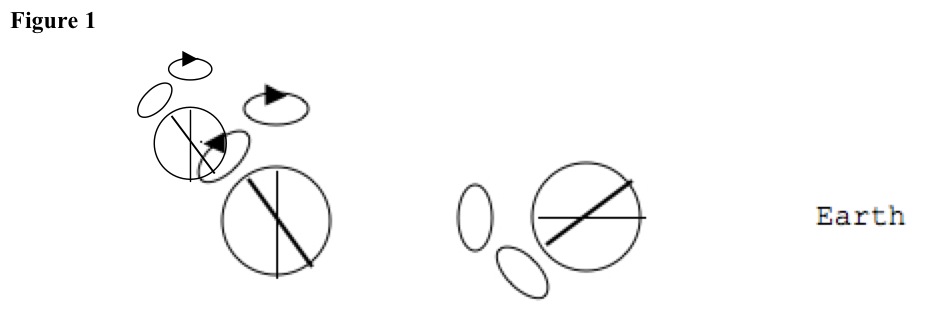
Neutron stars {pulsar}| can emit radio waves with 1000 times greater intensity than Sun radiation. From them, Earth observers receive dozens of microwave pulses per second. Galaxy has million pulsars.
accretion-powered pulsar
Pulsars {accretion-powered pulsar} can accrete matter from companion stars and have matter-accretion disks that spin almost as fast as pulsar. Disk charge acceleration emits x-rays, not radio waves, because gravitational force is very high.
magnetar
Neutron-star magnetars can have magnetic field 10^10 tesla. Strong magnetic field accelerates charges, emitting x-rays constantly.
rotation-powered pulsar
Most pulsars {rotation-powered pulsar} emit microwave radiation by magnetic-field rotation. Such pulsars have magnetic fields 10^12 times Earth magnetic field and spin dozens of times per second. Pulsar radiation causes rotation-powered pulsars to spin slower as rotational energy is lost.
Rotation-powered pulsars can have companion stars and can accrete matter, typically increasing pulsar spin but weakening magnetic field. These pulsars spin tens or hundreds of times each second.
Rotation-powered pulsars {strong-field pulsar} can have stronger 10^8-tesla magnetic fields and spin once each second.
rotation-powered pulsar: poles
Magnetic poles typically do not align with spin axis. Magnetic field rotates at angle to pulsar rotation, causing electric fields. Electric fields accelerate charges from pulsar surface. Magnetic field aligns accelerated charges along magnetic poles. Accelerated charges have almost light speed and emit synchrotron-radiation microwaves. Synchrotron radiation lowers relativistic mass, to keep charges below light speed.
When charges have almost light speed, special relativity causes light waves not to radiate in all directions but form a beam in motion direction. Synchrotron radiation aligns along magnetic-pole axis. Microwave beams continuously radiate from both poles, in opposite directions. See Figure 1.
Because pulsars spin, magnetic-pole axis rotates. Axis can point toward Earth once each rotation. For most pulsars, magnetic-pole axis never points toward Earth. Because pulsars rotate, magnetic-pole axis can never constantly point at Earth.

Physical Sciences>Astronomy>Star>Kinds
Outline of Knowledge Database Home Page
Description of Outline of Knowledge Database
Date Modified: 2022.0224